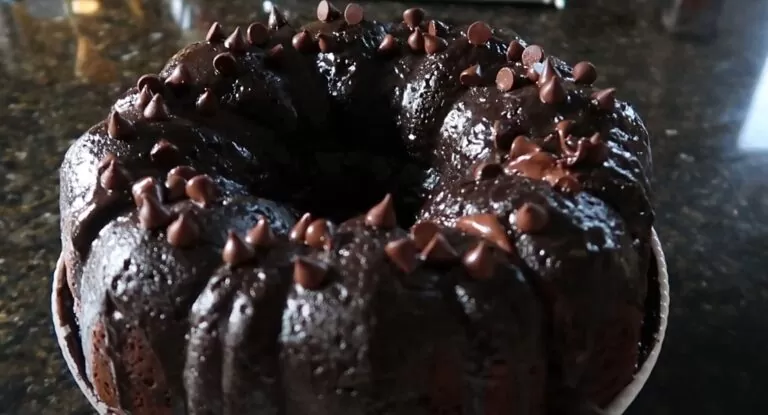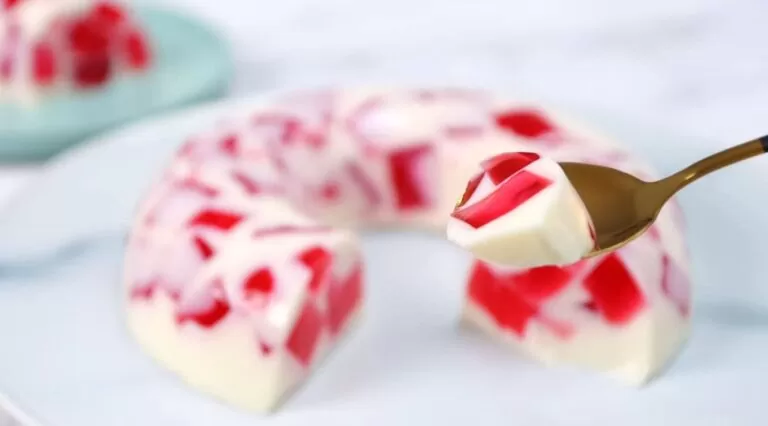Can You Mix Cream Cheese With Eggs?
Cream cheese and eggs are two breakfast staples made for each other. But can these two ingredients be combined to create something even more delicious? This age-old question has perplexed chefs and home cooks alike. The creamy richness of cream cheese contrasts deliciously with the fluffy lightness of whipped eggs, leading adventurous cooks to experiment with blending them. Will they curdle, or will they create culinary magic? Let’s explore the science and art behind this potential pairing and see if we can unlock new possibilities for the breakfast table. The possibilities are endlessly intriguing when cream cheese meets eggs.
Executive Summary
Yes, you can safely and easily mix cream cheese with eggs. The key is to mix the cream cheese thoroughly first before adding the eggs. Use an electric mixer or whisk to blend the cream cheese until fully smooth. Then, you can incorporate beaten eggs a little at a time, whisking continuously until well blended. The eggs and cream cheese will emulsify together. This versatile mixture can be used in recipes like bagels, cheesecakes, breakfast casseroles, dips, spreads, and more. With proper mixing techniques, the cream cheese and eggs will combine beautifully to make a rich, creamy mixture perfect for baking or spreading. Just be sure to mix the cream cheese first before adding the eggs!

How To Mix Cream Cheese With Eggs
Blending Creamy Cream Cheese into Fluffy Eggs
Cream cheese is a magic ingredient that can take eggs from bland breakfast fare to rich and decadent. While eggs on their own are a blank canvas, the addition of cream cheese imparts a tangy flavor and silky texture that enhances everything from omelets to bakes. By following the proper technique, cream cheese integrates seamlessly into egg dishes for optimal creaminess.
Cloud Bread with Cream Cheese
Cloud bread is an airy, chewy bread made entirely from egg whites and yolks. Adding cream cheese gives cloud bread even more flavor.
Ingredients: 3 egg whites, one egg yolk, 2 ounces cream cheese, softened 1/4 teaspoon cream of tartar, Pinch of salt.
Instructions:
- Preheat oven to 300°F. Line a baking sheet with parchment paper.
- Using a stand mixer or hand mixer, beat egg whites and cream of tartar on high speed until stiff peaks form.
- In a separate bowl, beat together the egg yolk and cream cheese until completely smooth.
- Gently fold the egg yolk mixture into the whipped egg whites without deflating them.
- Scoop large spoonfuls of the mixture onto the baking sheet, spacing 2 inches apart.
- Bake for 30 minutes until set and lightly golden on top. Cool before slicing.
The cream cheese adds a tangy flavor and richness to the cloud bread while keeping it impressively light and airy.
Creamy Scrambled Eggs
Adding cream cheese to scrambled eggs creates a smooth, creamy texture and locks in moisture so the eggs don’t dry out.
Ingredients: 6 eggs 2 ounces cream cheese one tablespoon butter Salt and pepper to taste
Instructions:
- In a bowl, beat eggs until just blended, not frothy.
- Mix in cream cheese and beat until completely incorporated and smooth. The cream cheese must be thoroughly blended in, or it may curdle the eggs.
- Melt butter in a skillet over medium heat. Pour in egg mixture.
- Cook, stirring frequently with a spatula to form soft curds. Remove from heat when eggs are still moist but set.
- Season with salt and pepper. Serve warm.
The cream cheese creates a rich, velvety texture in the otherwise simple scrambled eggs.
How Cream Cheese Affects Eggs
When appropriately combined, the fat in cream cheese blends smoothly into eggs. It adds substantial grease and moisture, making baked egg dishes tender rather than rubbery. The tangy, creamy flavor also helps mask egginess.
However, cream cheese can cause eggs to curdle if not mixed thoroughly or added carefully. Whip the cream cheese first before gently folding it into eggs. Start with a 1:1 ratio. Too much cream cheese overwhelms the structure of the eggs.
Cream cheese transforms the possibilities of eggs. From fluffy omelets to decadent cheesecake, cream cheese takes eggs to the next level. You can enjoy eggs and cream cheese mixed deliciously with some care and the proper technique.

Tips for Mixing Cream Cheese With Eggs
Mastering the Technique of Blending Cream Cheese and Eggs
Combining cream cheese into egg batters and foams requires care to keep the textures light and prevent curdling. You can flawlessly integrate cream cheese into your favorite egg dishes with a few simple tips.
Proper Separating Technique
Many recipes call for separating eggs, using the whites whipped into foams or meringues. Separating the eggs properly is crucial.
- Crack eggs one at a time into a small bowl before adding to the recipe to avoid getting shells or rotten eggs into the full batch.
- Carefully pass the yolk from half shell to half shell, letting the white drain off completely.
- Ensure no egg yolk breaks into the whites, as the fat prevents whipping.
- Use three bowls – one for whites, one for yolks, and one for broken eggs if needed.
Correct separation gives you the pure egg components needed for whipping and emulsifying.

Achieving a Smooth Batter
Lumps are the enemy when blending cream cheese and eggs! Small pockets of cream cheese or egg yolk will curdle when baked.
- Allow ingredients to reach room temperature before mixing.
- Whip the cream cheese first until entirely smooth and lump-free.
- Add eggs slowly while mixing constantly. Scrambled eggs blend more easily than whole eggs.
- Check for streaks of cream cheese and keep mixing until the batter is one consistent color and texture.
Proper mixing produces a homogenous batter that bakes evenly with no unpleasant surprises.
Whipping with Cream of Tartar
Cream of tartar is an essential helper when whipping egg whites into lofty foams.
- Cream of tartar is an acid that denatures egg white proteins, allowing tighter cross-linking as air is incorporated.
- Use 1/8 teaspoon per egg white. Sprinkle directly into whites at the foaming stage, then continue whipping.
- Without it, egg whites won’t achieve full volume and stability.
- Stay calm once stiff peaks form, or the foam will break down.
Cream of tartar gives sturdy structure to meringues and mousses made with whipped egg whites.
Transforming Egg Whites into Foam
Whipping incorporates tiny air bubbles into egg whites, transforming liquid into light, airy foam.
- Egg whites whip best at room temperature in a clean metal or glass bowl.
- Use a stand mixer or hand mixer for several minutes until soft peaks form.
- Add cream of tartar once foamy, then continue whipping until glossy, stiff peaks form.
- Overwhipping causes grains and weeping. Stop once the whites are stiff and glossy.
With the right technique, egg whites become lofty foams that leaven cakes, lighten omelets, and top pies gloriously.

By mastering these tips, you can adeptly combine cream cheese into egg dishes for perfect results every time. Proper separating, thorough mixing, cream of tartar stabilization, and egg white foaming techniques are the keys to success.
FAQ
What exactly happens when you mix cream cheese and eggs together?
A beautiful emulsion forms when cream cheese and eggs are properly blended together. The fat in the cream cheese does not curdle the eggs, as long as the cream cheese is fully whipped smooth first before adding the eggs. This allows the proteins in the eggs and cream cheese to come together in a stable matrix that resists separation. Beating air into the cream cheese and eggs also contributes to a light, creamy final texture.
Can I use any cream cheese?
Stick with full-fat brick cream cheese rather than whipped. Whipped cream cheese contains extra air and stabilizers that can react poorly when eggs are added. Softened regular cream cheese whips up lighter and creamier. Avoid cream cheese crumbles for the same reason. Let the cream cheese come to room temperature before mixing so it blends smoothly for best results.
What about low-fat or nonfat cream cheese?
Using low or nonfat cream cheese is risky when mixing with eggs. The lack of fat means less emulsion stability so that the mixture may curdle or separate. Small amounts of lower-fat cream cheese may work but increase your risk of a grainy or clumpy result. For lush, creamy results, use full-fat brick cream cheese.
What percentage of each should I use?
A good starting ratio is equal parts cream cheese to eggs by weight. For example, 8 ounces of cream cheese to 8 ounces (about four large) eggs. Adjust to your preference – more cream cheese will be more decadent and more indulgent, while more eggs make it lighter and fluffier. Just maintain at least a 1:1 ratio for the emulsion to hold.
Should ingredients be at room temperature?
Having the cream cheese and eggs at room temperature helps them incorporate more easily and faster. Cold ingredients from the fridge will take longer to blend smoothly. Softened cream cheese also whips lighter. Let refrigerated eggs stand for 30 minutes to lose their chill before mixing.
What’s the best way to combine cream cheese and eggs?
First, whip the cream cheese with a mixer or whisk until completely smooth and fluffy with no lumps. Then, slowly beat in the eggs, one at a time, fully incorporating after each addition. Scrambled or lightly beaten eggs blend more smoothly than whole eggs. Combine just until blended, being careful not to overmix once combined, or the emulsion may break.
How do I know if my cream cheese and egg mixture has emulsified properly?
When properly emulsified, the mixture will be completely smooth with a consistent creamy color and texture. No streaks or globs of cream cheese or egg yolk should remain. It should have a mayonnaise-like appearance. If it appears greasy, gritty, lumpy, or curdled, the emulsion has broken – the ingredients likely weren’t blended thoroughly enough.
Can the mixture curdle after combining successfully?
Yes, the emulsion can still break if overmixed, overheated, or additional ingredients are added improperly. Once combined, handle the mixture gently. Whisking vigorously hot ingredients or acidic ingredients like lemon juice can cause curdling afterward.
How should I safely store cream cheese and egg mixtures?
For short-term use, store in the fridge for up to 4 days. The emulsified mixture is prone to weeping, where liquid leaches out, so wrap or cover tightly. For longer storage, freeze up to 2-3 months. Thaw in the refrigerator before using.
What are some serving ideas for the cream cheese and egg combo?
Get creative with sweet or savory applications. Spread on bagels or toast for an indulgent breakfast. Use for cheesecake filling or frosting. Add to omelets or scrambles. Mix in herbs and spices for a veggie dip. Use as the creamy base for quiches or casseroles: top baked potatoes or stuffed chicken breasts. The possibilities are endless!
Related Video: Cream Cheese Omelet With Everything Seasoning | Big Little Recipes
Final Words
As we’ve explored, the answer is a resounding yes – cream cheese and eggs can be mixed together successfully with proper technique. Whipping the cream cheese first ensures it will incorporate smoothly with the eggs. From there, the possibilities for using this luscious blend are endless. The cream cheese gives eggs more body and richness, while the eggs add airiness. Together, they make an incredible base for dips, spreads, dessert fillings, breakfast bakes, and so much more. So, next time you want to add indulgence to a recipe, don’t hesitate to fold cream cheese and fresh eggs together. The decadent results will have you mixing up this tandem again and again. The whole of cream cheese and eggs is greater than the sum of its parts.







